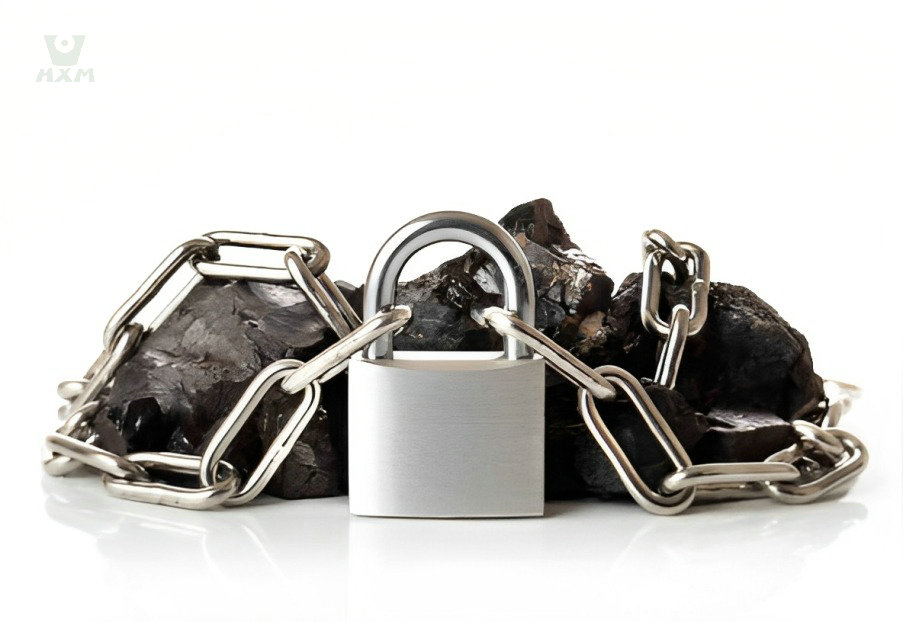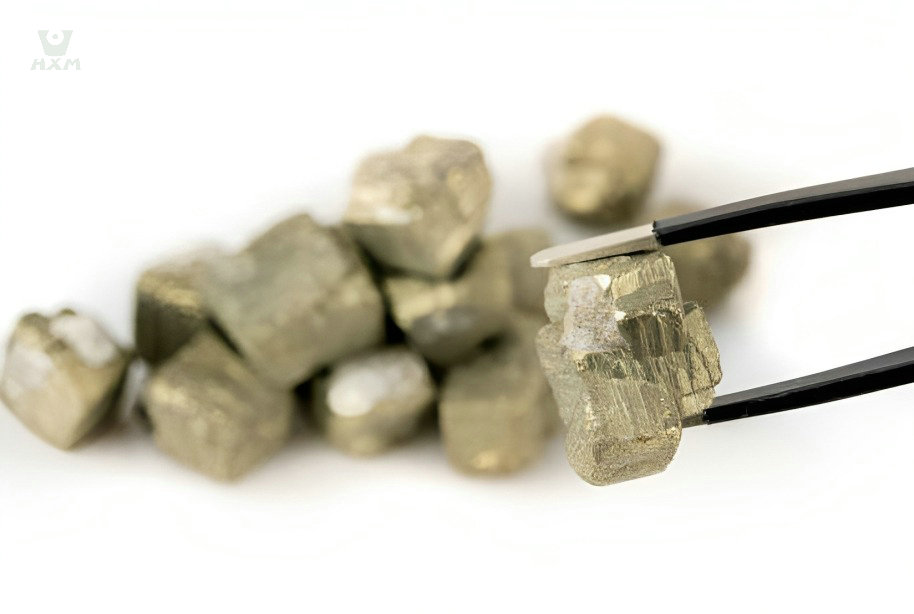Have you ever wondered about the magnetic properties of different types of steel? Steel is a ubiquitous material used in countless applications, ranging from construction to manufacturing. While some forms of steel are well-known for their magnetic properties, such as stainless steel, others leave us questioning their magnetic behavior. One such steel variant that often sparks curiosity is carbon steel. With its wide usage in various industries, including automotive, infrastructure, and household appliances, it is natural to wonder: is carbon steel magnetic?
is carbon steel magnetic?
Carbon steel, in general, is magnetic. The magnetic properties of steel depend on its composition and microstructure. Carbon steel is primarily composed of iron and carbon, with trace amounts of other elements. The presence of iron, which is a ferromagnetic material, contributes to the magnetic behavior of carbon steel. When the steel is in a solid state, the iron atoms align themselves in a specific pattern called a crystalline structure. This alignment allows the material to exhibit magnetic properties.
In this blog, we will explore the fascinating world of carbon steel and delve into the topic of its magnetic characteristics. We will uncover the scientific principles behind magnetism, examine the composition of carbon steel, and unravel the factors that influence its magnetic behavior. So, if you’ve ever been intrigued by the magnetism of carbon steel and want to understand its secrets, read on to unravel the mystery and gain a deeper understanding of this essential material.
The Science Behind Magnetism

-Alloyours carbon steel manufacturers
Exploring the Fundamentals of Magnetism
Magnetism is a captivating natural phenomenon that arises from the intrinsic properties of certain materials. It is the force that enables magnets to attract or repel objects and plays a crucial role in various applications. To understand magnetism, we delve into its fundamental principles.
At the heart of magnetism lies the behavior of subatomic particles called electrons. Electrons possess a property called spin, which can be thought of as an intrinsic angular momentum. This spin generates a magnetic moment, similar to a tiny compass needle, associated with each electron.
In most materials, the magnetic moments of individual electrons cancel each other out, resulting in no net magnetism. However, in certain materials known as ferromagnetic materials, such as iron, nickel, and cobalt, the magnetic moments align themselves cooperatively, leading to a macroscopic magnetic effect.
This alignment occurs due to interactions between neighboring atoms and the crystal structure of the material. Within ferromagnetic materials, regions called magnetic domains form, where the magnetic moments align in the same direction. When an external magnetic field is applied, these domains can align in the direction of the field, resulting in a magnetized material.
Understanding the fundamentals of magnetism provides a foundation for comprehending the behavior of magnetic materials, including carbon steel. In the case of carbon steel, which contains iron as the primary component, the presence of ferromagnetic iron atoms contributes to its magnetic properties. However, factors such as carbon content, alloying elements, and microstructure can influence the strength and stability of the magnetism in carbon steel. In the following section, we will explore the specific characteristics of ferromagnetic materials and their relevance to carbon steel’s magnetic behavior.
Understanding ferromagnetic materials
Ferromagnetic materials exhibit a remarkable ability to become permanently magnetized. This behavior stems from their unique atomic and crystalline structures, which promote the alignment of magnetic moments.
In ferromagnetic materials like iron, nickel, and cobalt, the individual magnetic moments of electrons align spontaneously due to a phenomenon known as exchange interaction. This alignment occurs at the atomic level and gives rise to regions called magnetic domains.
Within each domain, the magnetic moments align in a specific direction, creating a net magnetic field. In an unmagnetized state, these domains have random orientations, resulting in a net magnetization of zero. However, when an external magnetic field is applied, it can influence the alignment of the domains, causing them to line up in the direction of the field.
The alignment of magnetic domains enhances the overall magnetic effect of the material, resulting in its magnetization. This magnetization persists even after removing the external magnetic field, making ferromagnetic materials useful for creating permanent magnets.
Carbon steel, being primarily composed of iron, exhibits ferromagnetic behavior to a certain extent. However, the carbon content, alloying elements, and microstructure can affect the strength of magnetism in carbon steel. For instance, increasing the carbon content or adding certain alloying elements may disrupt the alignment of magnetic moments, reducing the material’s overall magnetization.
Understanding the unique characteristics of ferromagnetic materials is essential for comprehending the magnetic behavior of carbon steel. For industries and applications requiring specific magnetic properties in carbon steel, consulting reputable carbon steel manufacturers are vital to ensure the desired material composition and magnetic performance.
Composition of Carbon Steel
Carbon steel is a widely used material known for its strength, versatility, and affordability. It is primarily composed of iron (Fe) and carbon (C), with trace amounts of other elements present.
Iron (Fe)
Iron is a fundamental component of carbon steel, providing its structural strength and many of its essential properties. It is the most abundant element in carbon steel, typically constituting the majority of its composition.
- Structural Backbone: Iron forms the crystalline structure of carbon steel, providing the material with its internal framework. The arrangement of iron atoms gives carbon steel its mechanical properties, such as toughness, ductility, and tensile strength.
- Ferromagnetic Behavior: Iron is a ferromagnetic material, meaning it exhibits a strong magnetic response. This property contributes to the magnetic behavior of carbon steel, making it susceptible to magnetization to some extent.
- Alloying Potential: Iron serves as a base element that can be alloyed with other elements to create various types of steel with different properties. By adjusting the alloying elements, such as carbon, manganese, or chromium, the characteristics of the resulting steel can be tailored for specific applications.
Understanding the role of iron in carbon steel is essential for comprehending its mechanical, magnetic, and alloying characteristics. The presence of iron provides the foundation for carbon steel’s strength and magnetic properties. Carbon steel manufacturers combined with other alloying elements, iron enables the customization of carbon steel to meet diverse industrial needs.
Carbon (C)
Carbon is a vital alloying element in carbon steel, playing a significant role in its mechanical properties, hardness, and overall performance.
- Hardness and Strength: Carbon content has a direct impact on the hardness and strength of carbon steel. Higher carbon levels result in increased hardness, making the steel more suitable for applications that require resistance to wear and deformation.
- Heat Treatment Response: Carbon steel’s response to heat treatment, such as quenching and tempering, is influenced by the carbon content. Carbon combines with iron to form iron carbide (Fe3C), which contributes to the steel’s hardness and the ability to be hardened through heat treatment processes.
- Machinability: Carbon content affects the machinability of carbon steel. Higher carbon content can make the steel more challenging to machine due to its increased hardness. However, the presence of carbon also enhances the steel’s ability to retain sharp edges and improve cutting performance.
- Ductility and Weldability: Carbon steel with lower carbon content exhibits greater ductility, allowing for easier deformation and shaping. It also tends to have better weldability compared to high-carbon steels, which may be more prone to cracking during welding.
Carbon, as a key alloying element, contributes to the unique characteristics of carbon steel. By adjusting the carbon content, carbon steel manufacturers can tailor the steel’s properties to meet specific requirements. From hardness and strength to heat treatment response and machinability, carbon plays a crucial role in defining the performance of carbon steel in various applications.
Trace Elements
In addition to iron and carbon, carbon steel may contain trace amounts of other elements that can influence its properties and behavior. These trace elements, while present in relatively small quantities, can have significant effects on the overall performance of carbon steel.
- Manganese (Mn): Manganese is commonly added to carbon steel as an alloying element. It helps improve the steel’s strength, hardenability, and resistance to wear and impact. Manganese also aids in the deoxidation process during steel production, improving the material’s cleanliness and overall quality.
- Silicon (Si): Silicon is another commonly found trace element in carbon steel. It enhances the steel’s strength and elasticity while promoting deoxidation during manufacturing processes. Silicon also contributes to improved resistance against oxidation and corrosion.
- Sulfur (S) and Phosphorus (P): Sulfur and phosphorus are impurity elements that can be found in small amounts in carbon steel. While they are undesirable in large quantities due to their negative effects on the material’s ductility and toughness, trace amounts of sulfur and phosphorus can aid in the machining process by improving machinability.
The presence of trace elements in carbon steel demonstrates the complexity of its composition and the potential for tailoring its properties for specific applications. Carbon steel manufacturers carefully control the content of these trace elements to optimize the steel’s mechanical properties, machinability, and other characteristics. By understanding the influence of trace elements, carbon steel can be tailored to meet the diverse needs of industries ranging from construction to manufacturing.
Understanding the composition and role of iron and carbon in carbon steel is essential to comprehend its mechanical properties, magnetic behavior, and response to various manufacturing processes. Carbon steel manufacturers play a critical role in ensuring the precise composition and quality of carbon steel, meeting the specific needs and requirements of industries across the globe.
Factors Influencing Magnetic Behavior
Effects of Carbon Content on Magnetism
The carbon content in carbon steel can have a significant impact on its magnetic behavior. Higher carbon levels tend to reduce the material’s magnetism. This is because increased carbon content disrupts the alignment of magnetic moments in the crystalline structure, weakening the overall magnetic effect. As a result, low-carbon steels, with carbon content below 0.2%, typically exhibit stronger magnetic properties compared to high-carbon steels.
Influence of Alloying Elements on Magnetic Properties
Alloying elements, such as manganese (Mn), nickel (Ni), and chromium (Cr), can influence the magnetic behavior of carbon steel. These elements can alter the arrangement and alignment of magnetic moments within the material. For example, the addition of nickel can enhance the magnetism of carbon steel, while chromium may reduce or even eliminate its magnetic properties. The specific combination and concentration of alloying elements play a crucial role in determining the magnetic behavior of the alloyed carbon steel.
Impact of Heat Treatment and Microstructure
Heat treatment processes and microstructure can significantly affect the magnetic behavior of carbon steel. During heat treatment, the arrangement of atoms and the formation of different phases can alter the material’s magnetic properties. For instance, quenching and tempering processes can introduce changes in the microstructure, leading to variations in magnetism. Additionally, factors such as grain size, crystal defects, and the presence of non-magnetic phases can also influence the material’s magnetic behavior.
Understanding the factors that influence the magnetic behavior of carbon steel, including carbon content, alloying elements, heat treatment, and microstructure, is crucial for predicting and controlling its magnetism. By carefully selecting the composition, processing conditions, and microstructural characteristics, carbon steel manufacturers can tailor carbon steel to exhibit desired magnetic properties for specific applications.
Experimental Observations
Magnetic Testing Methods for Carbon Steel
Various testing methods are employed to assess the magnetic behavior of carbon steel accurately. These methods help determine the degree of magnetization and evaluate the material’s magnetic properties.
- Magnetic Permeability Testing: Magnetic permeability measures the ease with which a material can be magnetized. It quantifies the material’s response to an external magnetic field. Magnetic permeability testing provides valuable information about the magnetism of carbon steel and helps classify it into different categories based on its magnetic characteristics.
- Magnetic Hysteresis Testing: Hysteresis refers to the lag between the magnetization and demagnetization of a material when subjected to varying magnetic fields. Magnetic hysteresis testing involves measuring the magnetic flux density while changing the magnetic field strength. This method helps evaluate the magnetic behavior, coercivity, and remanence of carbon steel.
Case Studies and Examples of Carbon Steel Magnetism
Numerous case studies and examples demonstrate the magnetic behavior of carbon steel in practical applications. These observations shed light on the range of magnetism exhibited by different types of carbon steel and its relevance in various industries.
- Magnetic Properties of Low-Carbon Steels: Low-carbon steels with minimal alloying elements exhibit strong magnetic behavior. They are commonly used in applications where magnetic properties are essential, such as magnetic cores for transformers, magnetic sensors, and magnetic storage devices.
- Non-Magnetic Carbon Steels: Certain carbon steels, particularly those with high carbon content or specific alloying elements, may exhibit weak or even non-magnetic behavior. This makes them suitable for applications where magnetic interference needs to be minimized, such as in electronic devices or sensitive measurement instruments.
By employing magnetic testing methods and studying real-world case studies, researchers and carbon steel manufacturers can gain insights into the magnetism of carbon steel. These observations contribute to a deeper understanding of carbon steel’s magnetic properties and assist in selecting the appropriate grades for specific applications.
Conclusion
Throughout this exploration, we delved into the composition, properties, and magnetic behavior of carbon steel. We discussed the role of iron and carbon as fundamental components of carbon steel, their impact on the material’s mechanical properties, and their contribution to its magnetism. Additionally, we examined the influence of alloying elements, heat treatment, and microstructure on carbon steel’s magnetic behavior.
carbon steel can exhibit magnetic properties to varying degrees depending on its composition, specifically the carbon content and the presence of alloying elements. Low-carbon steels generally exhibit stronger magnetism, while high-carbon steels or those with specific alloying elements may display weak or non-magnetic behavior.
Understanding the magnetic behavior of carbon steel is crucial for numerous industries and applications. From magnetic cores in electrical transformers to magnetic storage devices and sensitive electronic instruments, carbon steel’s magnetism plays a significant role. It enables the design and development of components and systems that rely on magnetic properties for their functionality.
Carbon steel manufacturers, with their expertise in material composition and processing, play a vital role in providing carbon steel with tailored magnetic properties to meet specific industrial requirements. Their knowledge and capabilities ensure the production of carbon steel with desired magnetic behavior and mechanical performance.
In conclusion, comprehending the magnetic behavior of carbon steel is essential for selecting the appropriate grades for specific applications, optimizing performance, and meeting industry needs. With its versatility, strength, and magnetic potential, carbon steel continues to be a valuable material in a wide range of industries, thanks to the expertise and innovation of carbon steel manufacturers.







